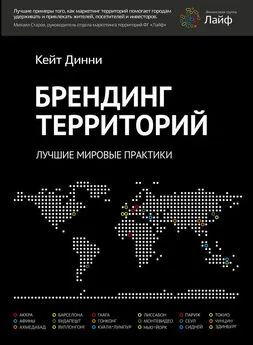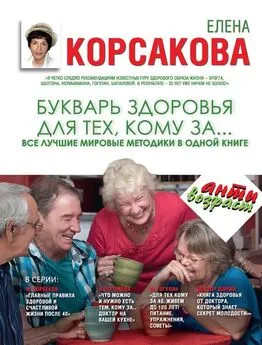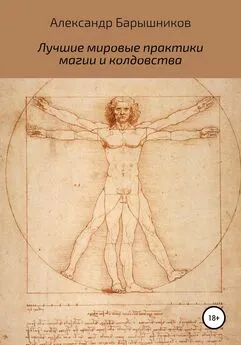Кейт Динни - Брендинг территорий. Лучшие мировые практики
- Название:Брендинг территорий. Лучшие мировые практики
- Автор:
- Жанр:
- Издательство:Манн Иванов Фербер
- Год:2013
- Город:Москва
- ISBN:978-5-91657-655-9
- Рейтинг:
- Избранное:Добавить в избранное
-
Отзывы:
-
Ваша оценка:
Кейт Динни - Брендинг территорий. Лучшие мировые практики краткое содержание
Брендинг территорий. Лучшие мировые практики - читать онлайн бесплатно полную версию (весь текст целиком)
Интервал:
Закладка:
143. Kazis, N. (2010), Picturing a car-free seine. The new vision forthe Paris waterfront, Streetsblog, 7 May, available at: http://www.streetsblog.org/20l0/05/07/picturing-a-car-free-seine-the-new-vision-for-the-paris-waterfront/(accessed 24 May 2010).
144. Keith, V. (2010), Clip-on architecture: Reforesting cities, Urban Omnibus, 13 January, available at: http://urbanomnibus.net/2010/01/clip-on-architecture-reforesting-cities/(accessed 28 May 2010).
145. Kelts, R. (1999), ‘Hiropon my heroine’, Zoetrope All-Story, Vol. 3, No. 4, available at: http://www.all-story.com/issues.cgi?action=show_story&story_id=55(accessed 5 June 2010).
146. Kelts, R. (2007), Japanamerica: How Japanese Pop Culture Has Invaded The U.S., Palgrave Macmillan, New York, United States.
147. Khera, M. (2009), Ahmedabad: The entrepreneurship capital of India, The Times of India, Ahmedabad edition, 13 August, Special Supplement, p. 6.
148. Kleppe, I.A., Iversen, N.M. and Stensaker, I.G. (2002), Country images in marketing strategies: Conceptual issues and an empirical Asian illustration, Journal of Brand Management, Vol. 10, No. 1, pp. 61–74.
149. Kneafsey, M. (2000), Tourism, place identities and social relations in the European rural periphery, European Urban and Regional Studies, Vol. 7, No. 1, pp. 19–33.
150. Kotler R., Asplund, C., Rein, I. and Haider, D.H. (1999), Marketing Places Europe: How to Attract. Investments, Industries, Residents and Visitors to Cities, Communities, Regions and Nations in Europe, Financial Times Management, London, United Kingdom.
151. Kotler R., Haider, D. and Rein, I. (1993), Marketing Places: Attracting Investment Industry, and Tourism to Cities, States, and Nations, Free Press, New York, United States.
152. Kuala Lumpur City Hall (2008), Draft Kuala Lumpur City Plan 2020, available at: http://klcity-plan2020.dbkl.gov.my/eis/?pagejd=280(accessed 7 January 2010).
153. Kumagai, Y and Yamada, Y. (2008), Green space relations with residential values in downtown Tokyo: Implications for urban biodiversity conservation, Local Environment. The International Journal of justice and Sustainability, Vol. 13, No. 2, pp. 141–157.
154. Lanfant, M.-F. (1995), International tourism, internalization and the challenge to identity, in Lanfant, M.-F., Allcock, J.B. and Bruner, E.M. (eds), International Tourism: Identity and Change, Sage Publications, London, United Kingdom, pp. 24–43.
155. Leonard, M. (1997), Britain™ Renewing Our Identity, Demos, London, United Kingdom.
156. Lindstrom, M. (2001), Corporate branding and the Web: A global/local challenge, Journal of Brand Management, Vol. 8, No. 4/5, pp. 365–368.
157. Long, L. (ed.) (2004), Culinary Tourism, University Press of Kentucky, Lexington, Kentucky, United States.
158. Lynch, К. (1960), The Image of the City, The MIT Press, Cambridge, United States.
159. MacCannell, D. (1999), The Tourist: A New Theory of the Leisure Class, University of California Press, Berkeley, United States.
160. Markusen, A. (2006), Urban development and the politics of a creative class: Evidence from a study of artists, Environment and Planning, Vol. 38, No. 10, pp. 1921–1940.
161. Markusen, A. and Schrock, G. (2006), The distinctive city: Divergent patterns in growth, hierarchy and specialization, Urban Studies, Vol. 43, No. 8, pp. 1301–1323.
162. Marshall, T. (ed.) (2004), Transforming Barcelona, Routledge, London, United Kingdom.
163. Martinez, J.G. (2007), Selling avant-garde: How Antwerp became a fashion capital (1990–2002), Urban Studies, Vol. 44, No. 12, pp. 2449–2464.
164. McCleary, K.W. and Whitney, D.L. (1994), Projecting Western consumer attitudes toward travel to six Eastern European countries, in Uysal, M. (ed.), Global Tourist Behaviour, International Business Press, New York, United States, pp. 239–256,
165. McWilliam, G. (2000), Building stronger brands through online communities, Sloan Management Review, Vol . 41, No. 3, pp. 43–54.
166. Mehta, H. (2010), Vibrant Gujarat 2011 attempts a Davos, The Times of India, Ahmedabad edition, 5 February, p. I.
167. Mehta, R.N. and Jamindar, R. (1988), Urban context, in Michell, G. and Shah, S. (eds), Ahmadabad, Marg Publications, Mumbai, India.
168. Melissen, J. (2005), Wielding soft power: The new public diplomacy, Netherlands Institute of International Relations Clingendael, available at: http://www.clingendael.nl/publications/2005/20050500_cdsp_paper_diplomacy_2_melissen.pdf(accessed 5 June 2010).
169. Mercer Human Resource Consulting (2008), Quality of Living Global City Rankings 2008, available at: http://www.mercercom/summary.htm?idContent=1307990(accessed 25 May 2010).
170. Merton, R. (1968), The Matthew effect in science, Science, Vol. 159, No. 3810, pp. 56–63.
171. Metzger, J. (2005), I Kottbullslandet: Konstruktionen av svenskt och utlandskt pa det kulinariska faltet (In the land of meatballs: The historical construction of Swedishness and foreignness in the culinary field), Stockholm Studies in Economic History 42, Stockholm University, Sweden.
172. Miele, M. and Murdoch, J. (2002), The practical aesthetics of traditional cuisines: Slow food in Tuscany, Sociologia Ruralis, Vol. 42, No. 4, pp. 312–328.
173. Miguens, J., Baggio, R. and Costa, C. (2008), Social media and tourism destinations: TripAdvisor case study, Advances in Tourism Research, Aveiro, Portugal, 26–28 May.
174. Mishima, Y., Shikanai, K., Hayashi, M. and Ishikawa, M. (2010), Revitalization of the Kyobashi River in Tokyo, paper presented at 15 thInter-University Symposium on Asian Mega-Cities (IUSAM), 11–12 March, University of Tokyo, Japan.
175. Mitchell, R.K., Agle, B.R. and Wood, D.J. (1997), Toward a theory of stakeholder identification and salience: Defining the principle of who and what really counts, Academy of Management Review, Vol. 22, No. 4, pp. 853–886.
176. Miyazaki, H. (1991), Totoro no sumu ie [The place where Totoro lives], Asahi Shinbunsha, Tokyo, Japan.
177. Moilanen T. and Rainisto, S. (2008), How to Brand Nations, Cities and Destinations: A Planning Book for Place Branding, Palgrave Macmillan, London, United Kingdom.
178. Morgan, N. (2004), Problematizing place promotion, in Lew, A., Hall, C. and Williams, A. (eds), A Companion to Tourism, Blackwell, Oxford, United Kingdom, pp. 173–183.
179. Morgan, N., Pritchard, A. and Pride, R. (2002), Destination Branding – Creating the Unique Destination Proposition, Butterworth-Heinemann, Oxford, United Kingdom.
180. Morgan, N., Pritchard, A. and Pride, R. (2004), Destination Branding: Creating the Unique Destination Proposition, Second edition, Elsevier; Butterworth-Heinemann, Oxford, United Kingdom.
181. Morton, L.W., Chen, Y.C. and Morse, R. (2008), Small town civic structure and interlocal collaboration for public services, City & Community, Vol. 7, No. I, pp. 45–60.
182. Moscardo, G. (1996), Mindful visitors: Heritage and tourism, Annals of Tourism Research, Vol. 23, No. 2, pp. 376–397.
183. Mossberg, L. and Getz, D. (2006), Stakeholder influences on the ownership and management of festival brands, Scandinavian Journal of Hospitality and Tourism, Vol. 6, No. 4, pp. 308–326.
184. Muniz, A.M. and O’Guinn, T.C. (2001), Brand community, Journal of Consumer Research, Vol. 27, No. 4, pp. 412–432.
185. Muntal, J. (2009), Propuesta de Plan Estrategico Conglomerado de Turismo en Montevideo [Competitiveness reinforcement plan], available at: http://www.diprode.opp.gub.uy/pacc/mvd/planestrategico.pdf(accessed 2 June 2010).
186. Musa, G. (2000), Tourism in Malaysia, in Hall, C.M. and Page, S. (eds), Tourism in South and South East Asia: Issues and Cases, Butterworth-Heinemann, Oxford, United Kingdom, pp. 144–156.
187. New Economics Foundation (NEF) (2004), Clone town Britain, New Economics Foundation, United Kingdom.
188. New Straits Times (2010), Putrajaya, Cyberberjaya aim low, 22 January, p. 12.
189. Nilsson, P.A. (2007), Stakeholder theory: The need for a convenor The case of Billund, Scandinavian Journal of Hospitality and Tourism, Vol.7, No. 2, pp. 171–184.
190. Nordic Council (2005), The Nordic Council Declaration in Aarhus on a New Nordic Cuisine, signed 30 June 2005, Nordic Council, Copenhagen, Denmark.
191. O’Flaherty, B. (2005), City Economics, Harvard University Press, Cambridge, United States.
192. O’Keefe, K. (2008), 75 % of journalists use blogs for story ideas: New survey, available at: http://kevin.lexblog.eom/2008/01/articles/public-relations/75-of-joumalists-use-blogs-for-story-ideas-new-survey/(accessed 15 January 2010).
193. Oakes, T.S. (1993), The cultural space of modernity: Ethnic tourism and place identity in China, Society and Space, Vol. 11, No. 1, pp. 47–66.
194. Obama, B. (2009), Speech to the Parliament of Republic of Ghana, I I July.
195. OECD (1995), Niche Markets as a Rural Development Strategy, Organisation for Economic Co-operation and Development, Paris, France.
196. OECD (2005), Culture and Local Development, OECD, Paris, France.
197. Ooi, C.-S. (2005), State-civil society relations and tourism: Singaporeanizing tourists, touristify-ing Singapore, Sojourn – Journal of Social Issues in Southeast Asia, Vol. 20, No. 2, pp. 249–272.
198. Ooi, C.-S. (2007), The creative industries and tourism in Singapore, in Richards, G. and Wilson, J. (eds), Tourism, Creativity and Development, Routledge, London, United Kingdom, pp. 240–251.
199. Ooi, C.-S. (2008), Reimagining Singapore as a creative nation: The politics of place branding, Place Branding and Public Diplomacy, Vol. 4, No. 4, pp. 287–302.
200. Ooi, C.-S. and Stoben B. (2010), Authenticity and place branding: The arts and culture in branding Berlin and Singapore, in Re-Investing Authenticity: Tourism, Places and Emotions, Knudsen, В.Т. and Waade, A.M. (eds), Channel View Publications, Bristol, United Kingdom, pp. 66–79.
201. Osborne, R. (2000), Travelling Light: Photography, Travel and Visual Culture, Manchester University Press, Manchester; United Kingdom.
202. Paddison, R. (1993), City marketing, image reconstruction and urban regeneration, Urban Studies, Vol. 30, No. 2, pp. 339–350.
203. Palmer, A. (2002), Destination branding and the Web, in Morgan, N., Pritchard, A. and Pride, R. (eds), Destination Branding: Creating the Unique Destination Proposition, Butten/vorth-Heinemann, Oxford, United Kingdom, pp. 186–197.
204. Papadopoulos, N. and Heslop, L.A. (1993), Product-Country Images: Impact and Role in International Marketing, International Business Press, New York, United States.
205. Parent, M.M. and Deephouse, D.L. (2007), A case study of stakeholder identification and prioritization by managers, Journal of Business Ethics, Vol. 75, No. 1, pp. 1–23.
206. Parkerson, B. and Saunders, J. (2005), City branding: Can goods and services branding models be used to brand cities? Place Branding, Vol. 1, No. 3, pp. 242–264.
207. Parmar, V. (2008), Here, farmers welcome Nano, Sunday Times, Ahmedabad edition, 5 October; p. 1.
208. Peck, J. (2005), Struggling with the creative class, International Journal of Urban and Regional Research, Vol. 29, No. 4, pp. 740–770.
Читать дальшеИнтервал:
Закладка:










